The Fighting 69th

Brief Synopsis
Cast & Crew
William Keighley
James Cagney
Pat O'brien
George Brent
Jeffrey Lynn
Alan Hale
Film Details
Technical Specs

Synopsis
In 1917, at Camp Mills, New York, Major "Wild Bill" Donovan swears in the new recruits of the fighting 69th New York regiment, among whom is Jerry Plunkett, an arrogant braggart who refuses to follow orders. Once sent overseas, Plunkett becomes even more belligerent, and not even the unit's beloved Chaplain, Father Francis Duffy, can bring him back into the fold. Despised by the other men, Plunkett causes a massacre at Rouge Boquet when he disobeys orders and inadvertently incites the Germans to attack. Disgusted by Plunkett's behaviour, Donovan wants to transfer him out of the company, but Duffy convinces the Major to give him another chance. Although a bully in camp who brags about coming home "dripping with medals," Plunkett is a coward in battle, and after he becomes hysterical and alerts the Germans to the company's location, thus causing more deaths, he is court-martialed and sentenced to be shot. Meanwhile, the rest of the regiment is ordered on a suicide mission to take the sector at the Argonne without military support. As the regiment is beseiged by shells, the jail in which Plunkett is imprisoned is bombed and he escapes. Dashing to the hospital, Plunkett witnesses Father Duffy leading the wounded in a recitation of the Lord's prayer, and discovers in himself the faith that the father had preached. Speeding to the front, Plunkett launches a daring attack with a trench mortar, blasting a hole through the barbed wire and thus allowing the regiment to capture their objective. In the attack, Plunkett is fatally wounded, but before he dies he is given the last rites and hailed as a hero.

Director

William Keighley
Cast
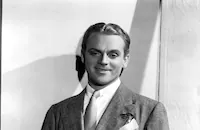
James Cagney
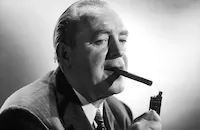
Pat O'brien
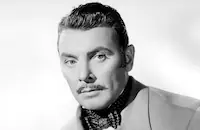
George Brent

Jeffrey Lynn

Alan Hale
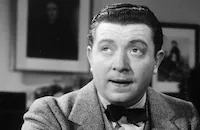
Frank Mchugh

Dennis Morgan

Dick Foran

William Lundigan

Guinn Williams

John Litel

Henry O'neill
Sammy Cohen
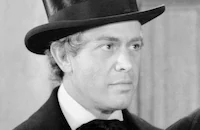
Harvey Stephens
Charles Trowbridge
Dewolf Hopper
Tom Dugan
Frank Wilcox
Crew
George Boothby
Adolph Deutsch
Louis F. Edelman
Leo F. Forbstein
Dean Franklin
Hugo Friedhofer
Tony Gaudio
Byron Haskin
Frank Heath
Charles Lang
Owen Marks
Fred Niblo Jr.
Captain John T. Prout
Norman Reilly Raine
Ted Smith
Jack L. Warner
Perc Westmore
Mark White
Rex Wimpy

Videos
Movie Clip



Trailer
Hosted Intro
Film Details
Technical Specs

Articles
The Fighting 69th
O'Brien's co-star in the picture was James Cagney, who often played the scoundrel in need of redemption from O'Brien's saints in Warner Bros. movies. Together the two actors co-starred in nine films together, including Ragtime (1981), the last film either one of them ever made. Close friends off camera, O'Brien later remarked of his frequent and easily more famous co-star, "Jimmy can steal a scene by lifting an eyebrow." Father Duffy was one of O'Brien's most famous portrayals, while Cagney's was patriotic showman George M. Cohan, whom he played in Yankee Doodle Dandy (1942). Ironically, statues of both of these famous men are still standing in the middle of New York City's Times Square.
Most of The Fighting 69th was filmed at Warner Brothers' Calabasas Ranch which doubled as Camp Mills, the regiment's training base, various French villages and numerous battlefields. No expense was spared in the pre-promotion of the film, which included a well-publicized meeting in New York City between O'Brien, Cagney, the real Father Duffy and surviving members of the regiment. For this event, more than five thousand fans showed up to greet the two stars when they arrived from Hollywood at Grand Central Station.
The Fighting 69th beat another rival studio's production of the same story to the theatres; Fox had planned to borrow Spencer Tracy from MGM for the starring role in Father Duffy of the Fighting 69th but dropped it once the O'Brien-Cagney picture went into production. When The Fighting 69th was released, the critics were mixed in their reviews. Some derided the movie's clichés while others enjoyed its vitality and pace. Frank Nugent, the film critic at the New York Times (and later a close collaborator of director John Ford), wrote that the film "is better if you can manage to forget the plot, with all it obvious theatrics, hokum and unoriginality, and think of it instead as the human, amusing and frequently gripping record of a regiments' marching off to war." The public, though, loved every minute of it and helped make it one of the biggest moneymakers of the year.
Producer: Hal B. Wallis, Jack L. Warner
Director: William Keighley
Screenplay: Dean Franklin, Fred Niblo, Jr., Norman Reilly Raine
Art Design: Ted Smith
Cinematography: Tony Gaudio
Special Effects: Byron Haskin, Rex Wimpy
Film Editing: Owen Marks
Original Music: Adolph Deutsch
Principal Cast: James Cagney (Jerry Plunkett), Pat O'Brien (Father Duffy),George Brent (Wild Bill Donovan), Jeffrey Lynn (Joyce Kilmer), Alan Hale (Sgt. Big Mike Wynn), Frank McHugh ("Crepe Hanger" Burke), Dennis Morgan (Lt. Ames), William Lundigan (Timmy Wynn), Dick Foran (John Wynn), Guinn "Big Boy" Williams (Paddy Dolan), Tom Dugan (Pvt. McManus).
BW-90m.
by Scott McGee

The Fighting 69th
Quotes
When did an Irishman need a prayer in a fight?- Father Duffy
Trivia
Priscilla Lane was cast as a girl back home. The part was cut before shooting.
William Gargan was originally cast as John Wynn.
Notes
According to a pre-production news item in Hollywood Reporter, in June 1939, Fox announced that it was planning to make a film based on this story. In response, Warner Bros. claimed priority rights to the story. The working titles of this film were The Old 69th and Father Duffy of the Fighting 69th. Pre-production news items in Hollywood Reporter note that Colonel Bill Donovan, the commander of the Irish 69th regiment, was hired as technical adviser for the film and George Boothby, the story adviser on the film, was written into the script. However, because the film credits Captain John T. Prout, a member of the original 69th regiment, as technical adviser, their participation in the final film has not been confirmed. Other pre-production news items in Hollywood Reporter note that Warner Bros. decided to increase the budget for the film and replaced producer Bryan Foy with Lou Edelman. The studio built an exact replica of Camp Miles, the World War I training camp on Long Island, at Providencia Ranch, Universal City, CA. Another item in Hollywood Reporter adds that Jeffrey Lynn replaced John Payne in the role of "Joyce Kilmer" when Payne was dropped from the studio's contract list. According to news items in Hollywood Reporter, the film, based on the exploits of the real Father Francis Duffy, featured actual war footage shot by Brendan. Joyce Kilmer was the author of the famous poem "Trees," and was killed in battle on July 30, 1918 above Ourcq, France. Kilmer served in the 165th regiment, however, not the 69th.
















